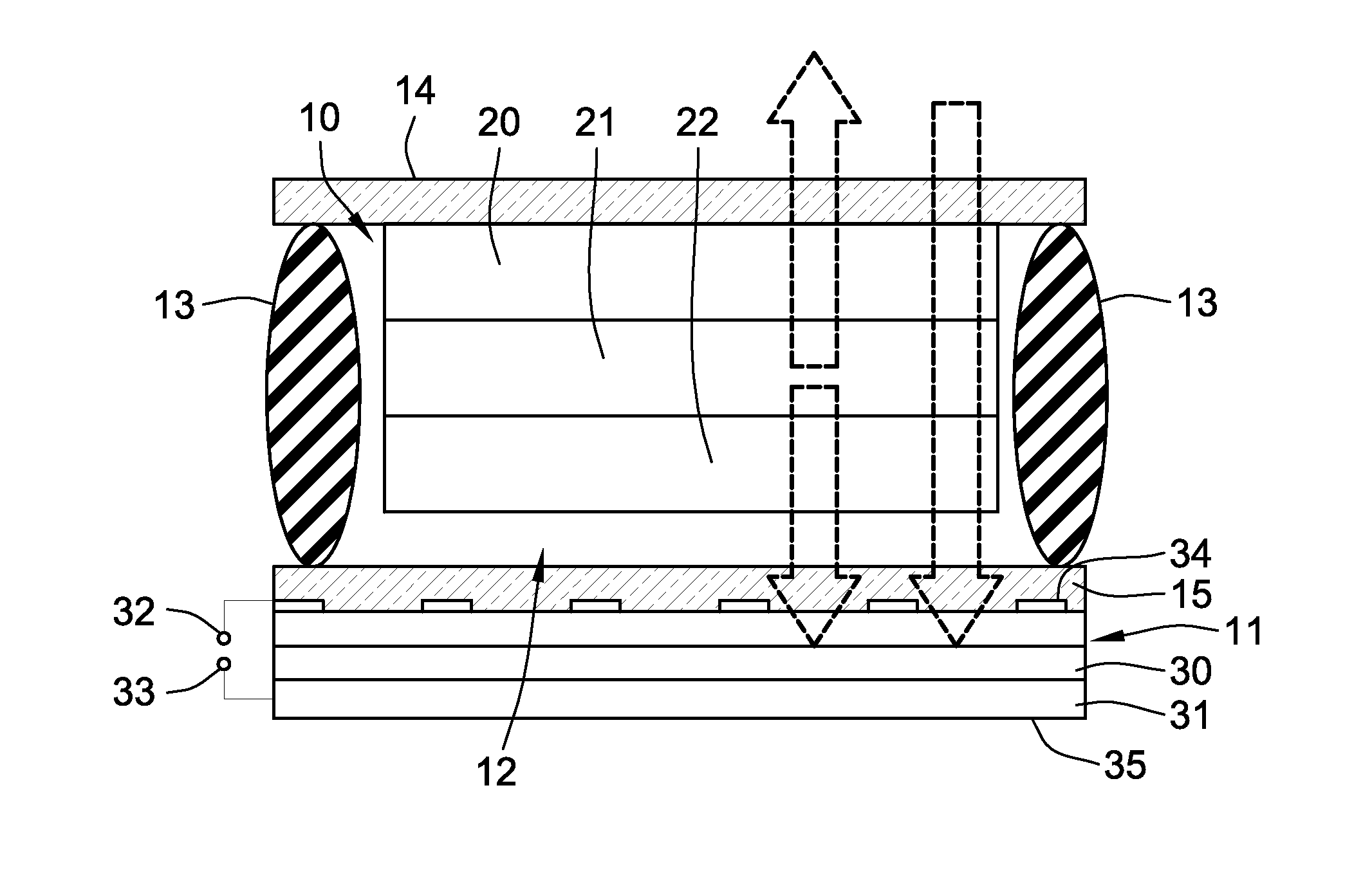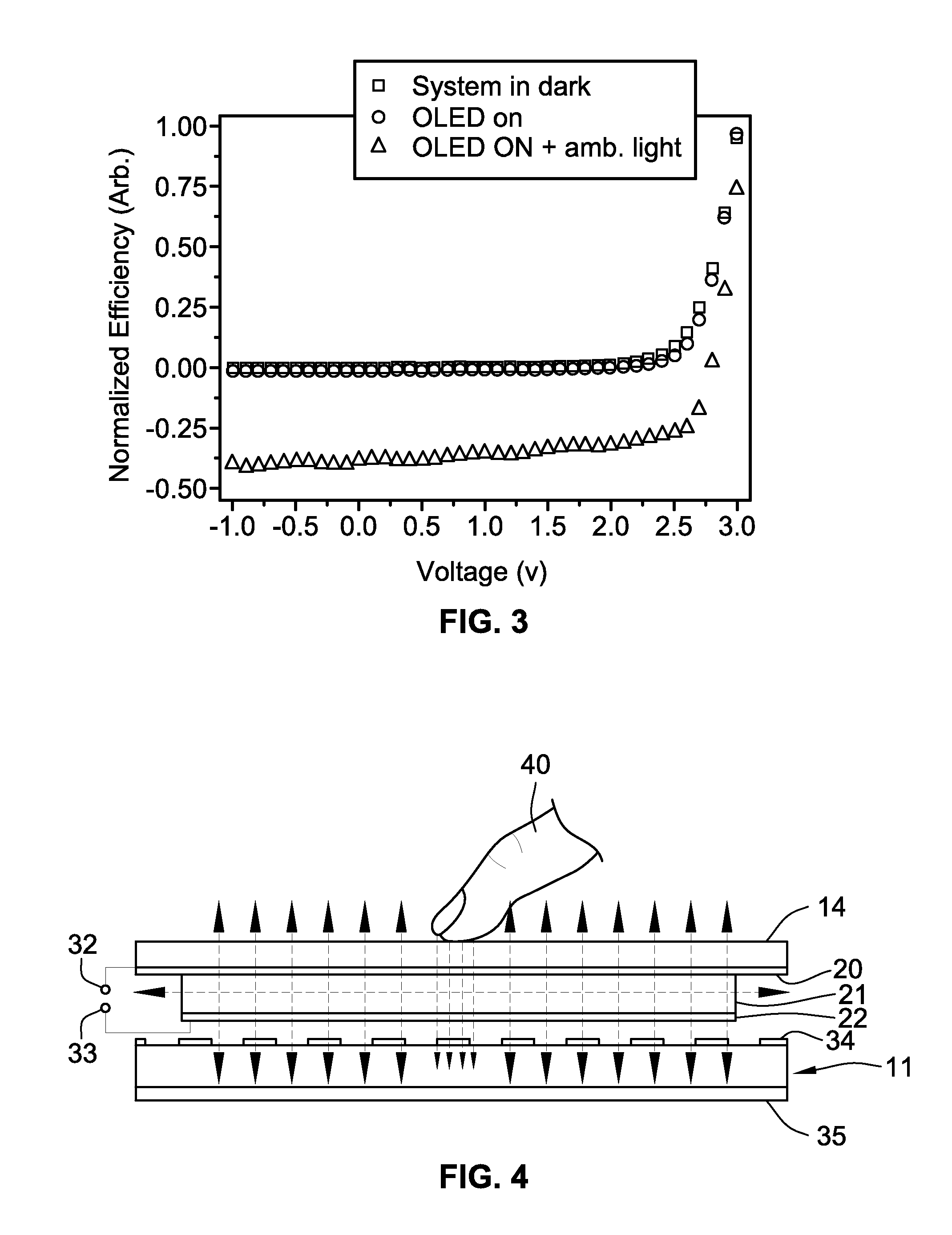Multi-functional active matrix organic light-emitting diode display
a light-emitting diode and active matrix technology, applied in the field of multi-functional amoled displays, can solve the problems of wasting a large amount of energy, complex and costly amoled display systems, and absorbing ambient light and a significant amount of light, and achieves low cost, low ambient light reflection, and easy fabrication.
- Summary
- Abstract
- Description
- Claims
- Application Information
AI Technical Summary
Benefits of technology
Problems solved by technology
Method used
Image
Examples
Embodiment Construction
[0019]Although the invention will be described in connection with certain aspects and / or embodiments, it will be understood that the invention is not limited to those particular aspects and / or embodiments. On the contrary, the invention is intended to cover all alternatives, modifications, and equivalent arrangements as may be included within the spirit and scope of the invention as defined by the appended claims.
[0020]FIG. 1 illustrates a display system that includes a semi-transparent OLED layer 10 integrated with a solar panel 11 separated from the OLED layer 10 by an air gap 12. The OLED layer 10 includes multiple pixels arranged in an X-Y matrix that is combined with programming, driving and control lines connected to the different rows and columns of the pixels. A peripheral sealant 13 (e.g., epoxy) holds the two layers 10 and 11 in the desired positions relative to each other. The OLED layer 10 has a glass substrate 14, the solar panel 11 has a glass cover 15, and the sealant...
PUM
 Login to View More
Login to View More Abstract
Description
Claims
Application Information
 Login to View More
Login to View More - R&D
- Intellectual Property
- Life Sciences
- Materials
- Tech Scout
- Unparalleled Data Quality
- Higher Quality Content
- 60% Fewer Hallucinations
Browse by: Latest US Patents, China's latest patents, Technical Efficacy Thesaurus, Application Domain, Technology Topic, Popular Technical Reports.
© 2025 PatSnap. All rights reserved.Legal|Privacy policy|Modern Slavery Act Transparency Statement|Sitemap|About US| Contact US: help@patsnap.com



